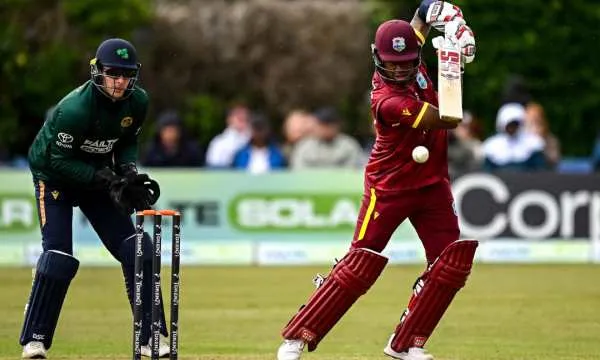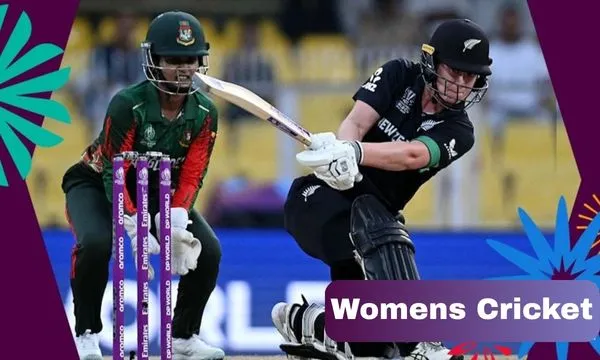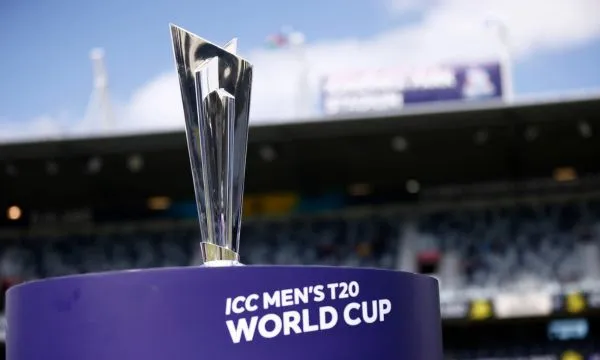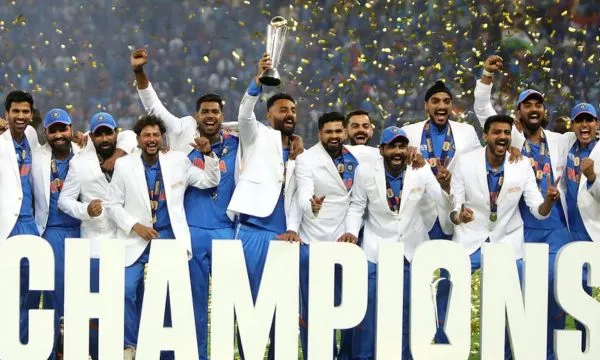Ready to finally understand all the excitement surrounding the world of cricket? You have come to the right place!
Anúncios
This sport, loved by millions, is not just one game but many, each with its own unique charm and rhythm.
It can seem a bit confusing at first with all the different cricket formats, but we are here to help you make sense of it all.
Test Cricket
First up is Test cricket, which is widely considered the most prestigious and traditional format of the game. It is a true test of a player’s skill, endurance, and mental strength, played over five days.
In Test cricket, two teams play two innings each, and there is no limit to the number of overs a team can bowl. A team must bowl a minimum of 90 overs in a day, weather permitting.
The goal is to score more runs than the opposing team and to bowl them out twice. A match can end in a win, a loss, a draw, or a tie, making the strategy incredibly deep and complex.
The most famous Test tournament is undoubtedly The Ashes, a historic series played between England and Australia.
Another major event is the ICC World Test Championship, which determines the best Test team in the world.
Legendary players like India’s Sachin Tendulkar and Australia’s Sir Don Bradman built their legacies in this format.
A truly mind boggling record is held by Brian Lara of the West Indies, who scored 400 runs in a single innings, a feat that has never been repeated.
One Day Internationals (ODI)
If Test cricket is a marathon, then One Day Internationals, or ODIs, are the middle distance race.
Introduced to make cricket more accessible and exciting for a wider audience, ODIs last for a single day and have become incredibly popular worldwide.
The rules are straightforward: each team gets to bat for one innings, which is limited to 50 overs, and each over consists of six balls.
Fielding restrictions, known as “powerplays”, are in place to encourage aggressive batting at different stages of the innings.
This format often leads to thrilling finishes and dramatic turnarounds.
The biggest ODI tournament is the ICC Cricket World Cup, a global event held every four years that captures the attention of billions.
Players like India’s MS Dhoni, known for his calm captaincy and finishing skills, and West Indies’ Viv Richards, famous for his aggressive batting, have become legends through their ODI performances.
A fun curiosity about ODIs is that a match can end in a tie, where both teams score the exact same number of runs. This then leads to a “Super Over” to decide the winner in knockout games.

Twenty20 (T20)
Created to deliver non stop action and entertainment, a T20 match is completed in about three hours, making it perfect for a modern, busy audience. It is all about big hits, creative shots, and energetic fielding from the very first ball.
In T20 cricket, each team bats for a single innings of just 20 overs. This limitation forces batters to play aggressively from the start, leading to high scores and frequent boundaries.
The rules are designed to keep the game moving quickly, with fielding restrictions in the first six overs, known as the “powerplay”, to give batters a chance to score freely.
Another exciting rule is the “free hit”, which is awarded to the batting team if the bowler bowls a no-ball.
On a free hit, the batter cannot be dismissed, encouraging them to swing for the fences.
This format is pure entertainment from start to finish.
T20 cricket is famous for its glamorous domestic leagues, with the Indian Premier League (IPL) being the largest and most popular.
There is also the ICC T20 World Cup, where nations compete to be crowned champions.
This format has created its own superstars, like Chris Gayle from the West Indies, who is known as the “Universe Boss” for his incredible power hitting.
One of his most famous records is scoring the fastest century in professional cricket, reaching 100 runs in just 30 balls.
First-Class Cricket
While international formats get the most attention, none of it would be possible without First-Class cricket.
It encompasses matches that last three or more days and is where cricketers hone their skills and prove they have what it takes to compete at the top level.
The rules of First-Class cricket are very similar to Test cricket. Matches involve two innings per team and focus on the long form development of skills.
It is where players learn to build an innings, bowl long spells, and maintain concentration for extended periods.
Famous First-Class competitions include the Sheffield Shield in Australia, the County Championship in England, and the Ranji Trophy in India.
These tournaments have a rich history and are fiercely contested. While you might not see the same global superstars all the time, this is where you will spot the next generation of legends.
It is a purist’s delight, showcasing the technical side of the game.
T10
Just when you thought cricket could not get any faster than T20, along came T10. As the name suggests, this format is even shorter and more action packed.
It is designed to be a quick, bite sized version of the game, with a full match completed in just 90 minutes, similar to a soccer match.
The rules are simple: each team faces 10 overs, or 60 balls. There is no time to waste, so batters are expected to attack from the very first ball.
The format is built for powerful hitters and wicket-taking bowlers who can make something happen in a very short span of time.
It is a condensed and thrilling spectacle that appeals to a new generation of fans who enjoy fast paced sports.
The most prominent T10 tournament is the Abu Dhabi T10 League, which has attracted many international stars.
While it is still a new format, its popularity is growing because it delivers a complete and exciting cricket experience in a very short amount of time.
The Hundred
The Hundred is another exciting innovation, first launched in England with the goal of making cricket more accessible and family friendly.
It is not based on the traditional six-ball over but instead simplifies the count to a much rounder number, making it easier for newcomers to follow along.
As the name suggests, each team’s innings consists of 100 balls. Bowlers can deliver either five or ten consecutive balls, and they change ends after every 10 balls.
A 25 ball powerplay starts each innings, and coaches can call a strategic timeout to talk to their players. These unique rules create a different tactical dynamic compared to other formats.
The Hundred also features equal prominence for both men’s and women’s competitions, which is a fantastic step forward for the sport.
The competition, simply called ‘The Hundred’, features city based teams with eye catching names and kits, creating a fun and festive atmosphere.
It has successfully drawn in large crowds and has been praised for its familyfriendly environment.
Many top international players participate, making it a high quality showcase of cricket.
Which of the Cricket Formats Demands the Most from an Athlete?
A strong argument can be made for Test cricket being the most demanding.
It requires incredible levels of physical endurance to play for five days, along with immense mental fortitude to maintain concentration and execute skills under pressure for long periods. It is a true test of a player’s entire character.
On the other hand, the shorter formats like T20 and T10 demand explosive power, incredible athleticism, and the ability to think on your feet.
Players must have a wide range of innovative shots, be able to bowl in high pressure situations, and be lightning fast in the field. The intensity is relentless, and there is no room for error.
ODIs require a mix of both, demanding endurance and the ability to switch between defensive and attacking mindsets.
Ultimately, the “hardest” format depends on the individual athlete’s strengths.
A player who excels in Test cricket might not have the power for T20, while a T20 specialist may lack the sustained concentration for Test matches.
The best players in the world are often those who can adapt their skills across all three main formats, which is a remarkable feat in itself.
Conclusion
From the historic tradition of Test cricket to the modern excitement of The Hundred, it is clear that cricket offers something for everyone.
The variety in cricket formats means each has its own unique set of rules, strategies, and heroes, making the sport incredibly diverse and engaging.
We hope this article has helped you understand the differences and inspires you to watch a match or two.
The world of cricket is vast and exciting, and now you are ready to be a part of it.
FAQs
1. What is the main difference between Test and ODI cricket?
The main differences are the duration and innings. Test cricket is played over five days with two innings per team, while an ODI is a one-day match with one innings of 50 overs per team.
2. Why was T20 cricket created?
T20 cricket was created to attract a new and younger audience with a shorter, more action-packed version of the game that could be completed in just a few hours.
3. Can a player compete in all formats?
Yes, many top cricketers play in all three international formats (Test, ODI, and T20).
4. What is “The Ashes”?
The Ashes is the name of the historic Test cricket series played between England and Australia. It is one of the oldest and most famous rivalries in all of sports.
5. Is The Hundred the same as T20?
No, The Hundred is a different format. While both are short form cricket, The Hundred is based on an innings of 100 balls, whereas T20 is based on an innings of 20 overs (120 balls). It also has unique rules like 10 ball “overs”.


